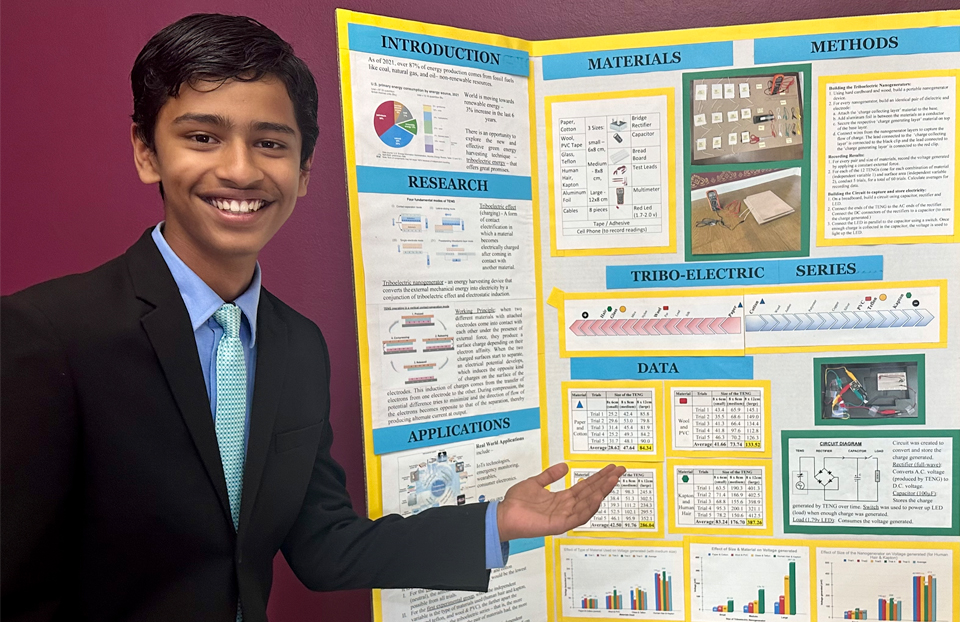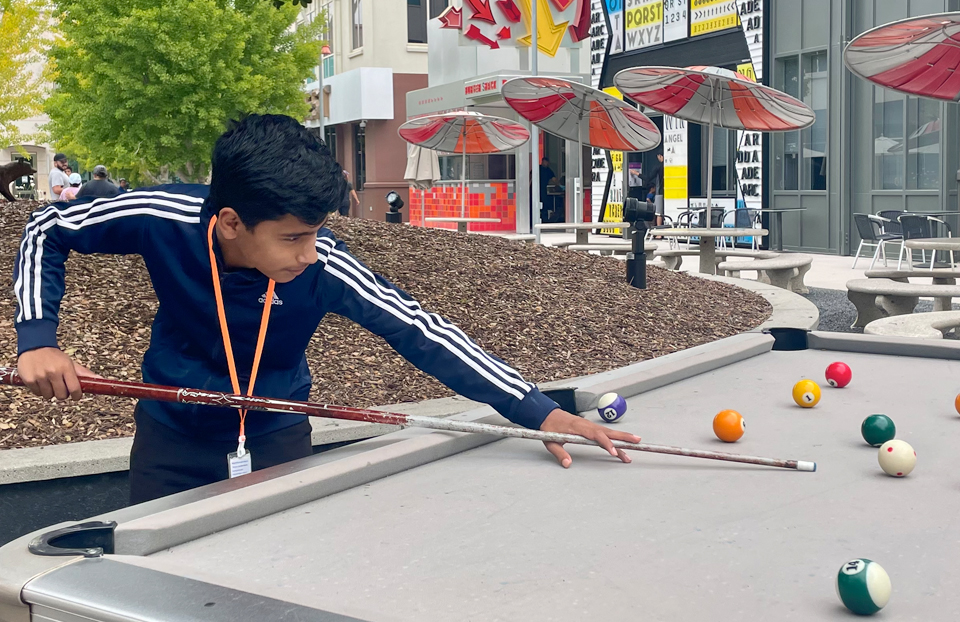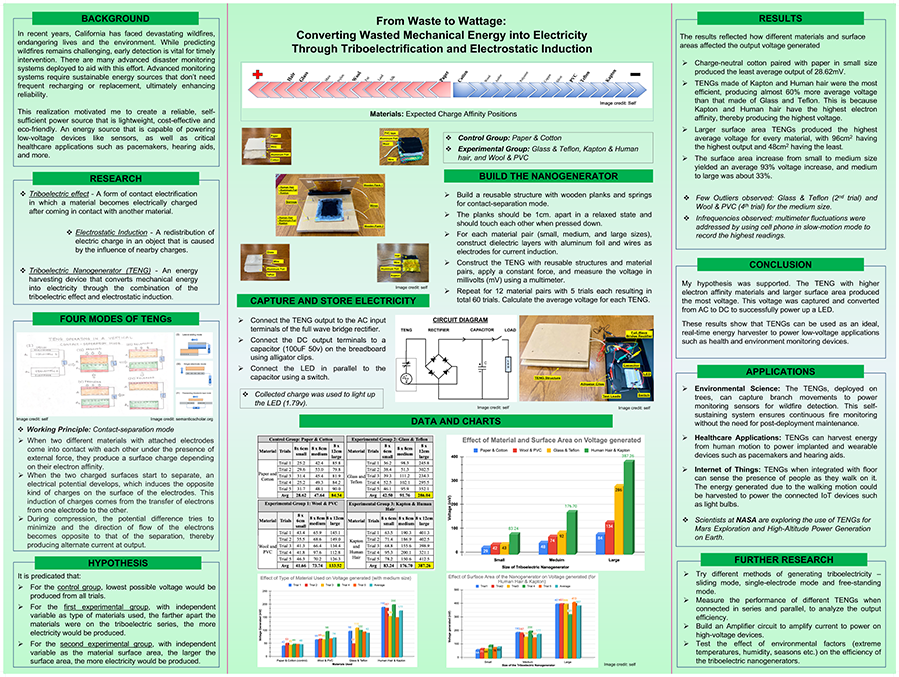Adyant Bhavsar
San Jose, CA
Adyant built a low-cost, eco-friendly triboelectric nanogenerator – a device that converts mechanical energy into electricity.
From Waste to Wattage: Converting Wasted Mechanical Energy into Electricity Through Triboelectrification and Electrostatic Induction
VIEW POSTERProject Background
Throughout Adyant’s home state of California, there are hundreds of cameras and sensors set up to monitor wildfires and other disasters. “This got me thinking,” he says, “that to increase the reliability, these devices would need a sustainable energy supply that does not need frequent recharging or replacing.” So he looked up renewable energy sources until he came across one called a triboelectric nanogenerator. This device converts mechanical energy into electricity. When two thin, touching objects separate or slide against one another, electrons transfer between them, causing an electric charge.
Tactics and Results
To build his own triboelectric nanogenerator, Adyant sandwiched together two wooden planks separated by springs. Each plank held layers of different material pairings connected to electrodes. Those material pairings included glass with Teflon, Kapton with human hair, wool with PVC, and paper with cotton. For each variable set, Adyant completed five trials by pressing the top plank down to make the material layers touch. When the materials touched then separated, they transferred electrons to one another, producing an induced current. Adyant also tested three different surface areas for each material layer pair. He found that Kapton, a film used in electronics, paired with human hair produced the most electricity, and increasing the surface area with all materials increased the electrical output linearly. Finally, Adyant included a capacitator in the circuit to store the generated electric charge and was able to store enough charge to power a 1.79-volt light-emitting diode, or LED. “This triboelectric nanogenerator is lightweight, low-cost, eco-friendly and customizable,” Adyant says.

Beyond the Project
Figuring out how to amplify to power high-voltage electronics would further optimize my triboelectric nanogenerator, Adyant says. He might also try connecting several of them and explore other methods of generating triboelectricity.
Other Interests
Adyant enjoys reading, writing, piano, basketball, tennis, speech and debate. He’s won several writing awards and has published two fictional story books. “These hobbies enable me to express myself, gain diverse perspectives, and positively influence others with my ideas,” Adyant says. He hopes to become an environmental engineer. “I want to contribute my skills toward finding solutions for environmental challenges, such as deforestation and pollution,” he says.


